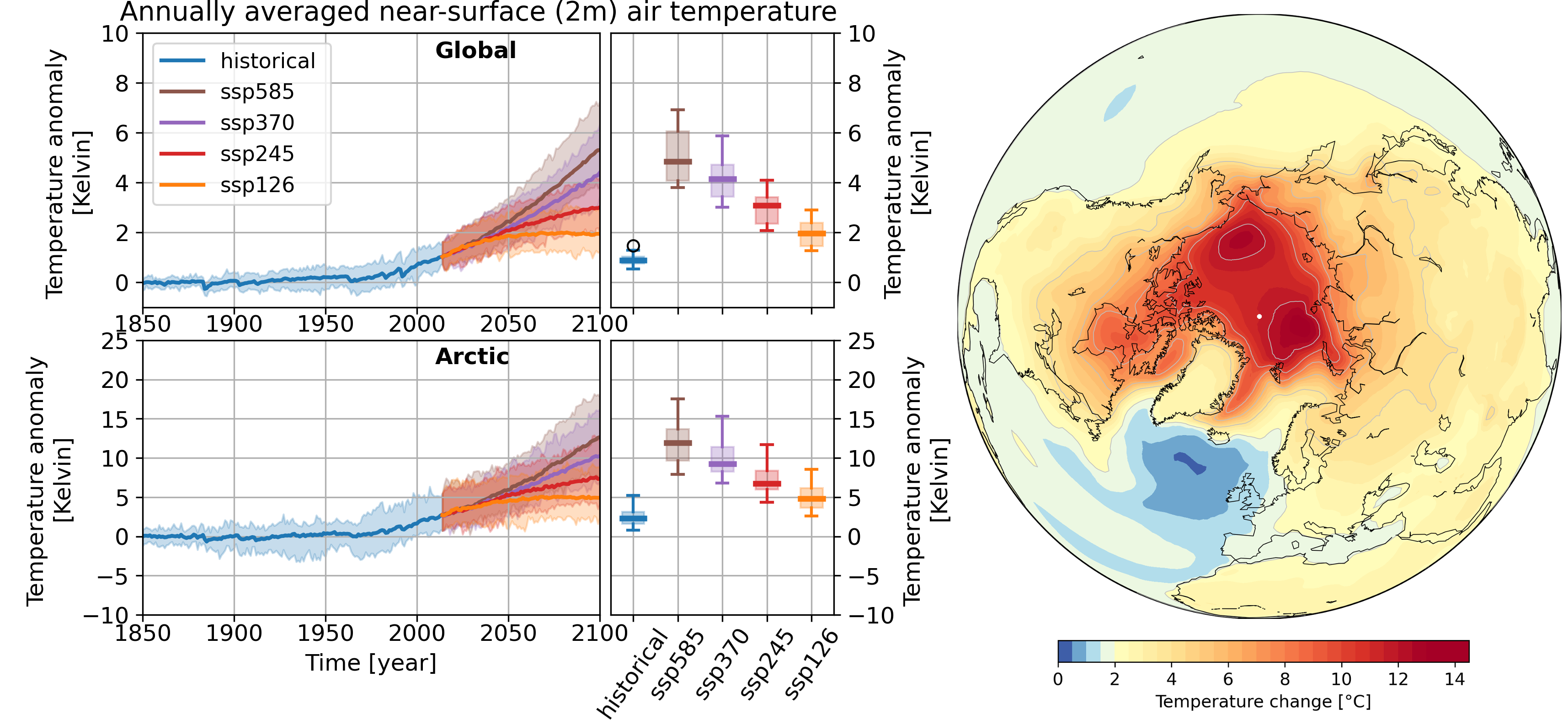The KeyCLIM project
There is overwhelming evidence that the North Atlantic, Arctic Ocean and surrounding land masses together form a key region for understanding northern latitude climate. Rapid climate change in this region is both a study opportunity and study obligation. Already now and even more so in the coming years significant changes are expected to be felt in weather patterns, biosphere and cryosphere and hence Norwegian and other northern societies (IPCC, 2013). How exactly will these changes look like? Do we have sufficient understanding of the Earth system to attribute trends in precipitation, extreme precipitation, glacier melt, ocean circulation, sea ice extent to climate change and associated forcing and feedback mechanisms? Which components of Earth System Models (ESMs) require further development because they represent key uncertainties in climate projections? Will feedback processes and the coupling between the spheres result in large or even irreversible shifts to the Earth system? Can we use ESMs efficiently to help answering questions on attribution, mitigation strategy and climate adaptation?
In KeyCLIM, the core team of modelers and institutions developing the Norwegian Earth System Model (NorESM) will assess its performance, develop it further and evaluate important physical processes. Ultimately KeyCLIM shall achieve a much improved picture of the near and long term future climate for the Arctic, northern latitudes and Norway, providing open data to the climate mitigation and climate impact community.
The primary objective of the project is:
- to use a nationally coordinated Earth system approach to understand, quantify and reduce uncertainty in projected northern latitude climate change and in particular Arctic warming.
The secondary objectives are:
-
Significantly advance the understanding of Earth system forcings, feedbacks, circulation and hydrological cycle in a warming Arctic and North Atlantic region through advanced data and model analysis.
-
Enhance the Norwegian Earth system modelling capability to address future scenarios of climate change through activating additional climate system components, improving the representation of key processes and increasing model resolution.
-
Quantify with improved modelling capability and systematic model experiments the likelihood of major or irreversible climate change in northern latitudes.

Access KeyCLIM data
In KeyCLIM, WP6 coordinates a set of sensitivity simulations based on the key processes identified in WPs 3-5. Data from these experiments is currently available for NIRD users that are members of the NIRD storage project NS9252K.
Read more about how to access data from the KeyCLIM sensitivity experiments here .
Below is a list of potential processes to be considered in WP6 sensitivity experiments.
| No. | Sensitivity experiment | Component modifications |
|---|---|---|
| 1. | Interactive ozone + VSLS tracer | Atmospheric chemistry and Ocean biogeochemistry |
| 2. | Atmospheric boundary layer | Atmospheric physics |
| 3. | Oceanic boundary layer | Ocean physics and biogeochemistry |
| 4. | Eddy parameterization | Ocean physics |
| 5. | Land ice sheet coupling | Ice sheet and land |
| 6. | Ice formation in clouds | Cloud microphysics |
| 7. | Snow dynamic over sea ice | Sea ice |
| 8. | All changes combined | Atmospheric chemistry, ocean biogeochemistry, atmospheric physics, ocean physics, ice sheet, land, cloud microphysics, sea ice |




